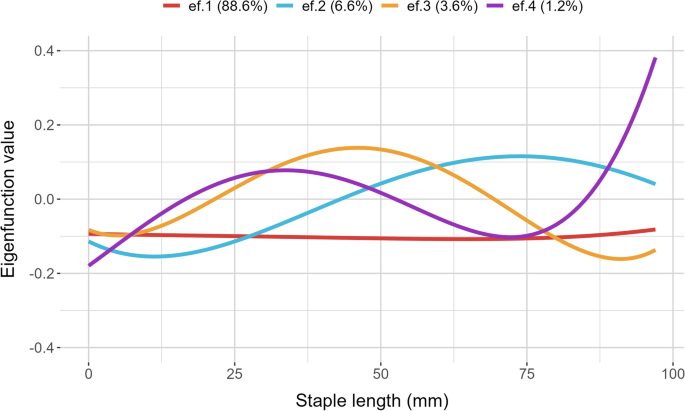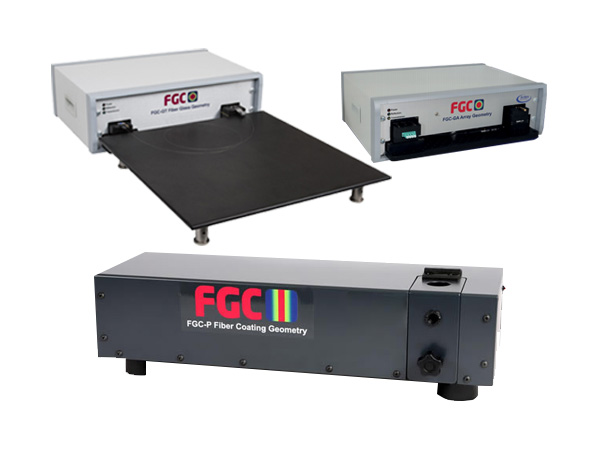High-Performance Optical Fibre Diameter Analyser for Specialized Applications
High-Performance Optical Fibre Diameter Analyser for Specialized Applications
Blog Article
Optimize Your Fiber Optic Performance: Comprehending Optical Fibre Diameter Analyser Technology
The performance of fibre optic systems is seriously affected by the accuracy of their diameter, a factor usually ignored in the search of ideal signal integrity. Recognizing the technology behind optical fibre diameter analysers reveals the elaborate balance between measurement precision and manufacturing high quality.
Relevance of Optical Fibre Diameter
The size of optical fiber plays an important duty in identifying the performance and performance of interaction systems. Alternatively, smaller sized sizes tend to sustain fewer modes, which can boost signal clarity and decrease crosstalk.

In addition, understanding the size's implications can cause cost savings by lowering the demand for signal amplification and repeaters in substantial networks (optical fibre diameter analyser). In final thought, the significance of optical fibre diameter can not be overstated, as it directly impacts the overall performance and reliability of modern communication systems

Exactly How Size Influences Signal Quality
Signal quality in optical fibre systems hinges considerably on the diameter of the fibre. A smaller size can lead to higher attenuation prices, resulting in signal loss as light journeys through the fiber.
On the other hand, larger diameters generally enable for boosted light capture and decreased modal dispersion, improving signal clarity. In multimode fibres, a bigger core diameter can support several light settings, but it might additionally introduce intermodal dispersion, which can deteriorate signal quality. Consequently, picking the optimum fibre size is crucial for accomplishing the wanted efficiency in particular applications.
In addition, the interaction between the fiber diameter and the wavelength of the light used plays a critical role in figuring out the effective transmission distance and overall signal stability. Therefore, comprehending just how fibre diameter affects signal top quality is crucial for network developers and engineers making every effort to enhance optical fibre systems for dependable, high-speed data transmission.
Overview of Size Analyser Modern Technology
In lots of optical fibre manufacturing procedures, exact measurement of fibre diameter is important for making sure constant efficiency and high quality (optical fibre diameter analyser). Diameter analysers are advanced instruments developed to analyze the physical dimensions of optical fibers with high precision. They utilize advanced optical and laser modern technologies to measure the size, ovality, and concentricity of the fiber, thus offering important information for quality assurance
These analysers can run in-line throughout the manufacturing process or as part of off-line testing protocols. In-line systems allow real-time surveillance, permitting producers to readjust parameters immediately, consequently keeping ideal production conditions. Off-line analysers, on the various other hand, give detailed analyses of batches, ensuring that any type of inconsistencies from specified resistances are recognized and resolved.
Diameter analysers considerably contribute to the decrease of flaws in optical fibres, boosting overall item reliability. By regularly gauging key parameters, these technologies help with conformity with sector criteria and specifications. As the need for high-performance optical fibers remains to increase, the function of diameter analysers ends up being progressively crucial in accomplishing the preferred top quality and performance criteria in fiber optic systems.
Key Functions of Fiber Size Analysers
Although different designs of fiber diameter analysers exist, they frequently share numerous vital attributes that improve their performance and integrity. Among the most significant functions is high-resolution dimension capacities, which make sure precise diameter readings, essential for keeping quality assurance in fiber production. Furthermore, lots of analysers include innovative optical sensors designed to find minute variations in fiber size, therefore giving important data for process optimization.
An additional vital attribute is real-time tracking, permitting operators to obtain instant find more information comments on fibre size throughout the production procedure (optical fibre diameter analyser). This capacity helps with quick read modifications and minimizes the likelihood of problems. Many analysers also come outfitted with user-friendly interfaces, enabling operators to conveniently browse via settings and information outcomes
Moreover, robust data storage space and analysis capabilities are crucial for tracking historic performance fads and guaranteeing compliance with market requirements. These features collectively contribute to the effectiveness of fiber size analysers in maximizing fiber optic efficiency.
Finest Practices for Fibre Optimization

First, regular calibration of optical fibre size analysers is essential. This guarantees exact dimensions and minimizes potential disparities that could impact efficiency. Next off, keeping a clean working atmosphere is crucial; dust and pollutants can lead to signify destruction.
Additionally, it is very important to choose fibres that fulfill certain application needs. This entails reviewing factors such as attenuation, data transfer, and ecological problems. Correct setup strategies ought to likewise be stuck to, consisting of avoiding sharp bends and too much stress, which can compromise fiber stability.
In addition, employing innovative tracking systems can assist in real-time performance analyses, enabling punctual recognition of problems. Normal screening and maintenance need to be conducted to guarantee that fibers continue to be within optimal operational specifications.
Last but not least, training personnel on the newest fiber optimization innovations and methodologies will certainly boost their capacity to execute efficient methods. By adhering to these ideal techniques, organizations can considerably enhance the performance and lifespan of their optical fiber systems, making sure efficient communication and data transfer.
Final Thought
In final thought, the assimilation of optical fibre diameter analyser modern technology is essential for making best use of fiber optic performance. By making sure specific measurements of fibre measurements, these analysers substantially enhance signal top quality and reduce losses during information transmission.
Signal quality in optical fiber systems pivots considerably on the diameter of the fiber.In many optical fiber manufacturing procedures, precise dimension of fiber diameter is crucial for ensuring consistent performance and top quality. As the demand for high-performance optical fibers continues to increase, the role of diameter analysers becomes increasingly important in attaining the desired quality and performance criteria in fibre optic systems.
These features collectively add to the efficacy of fiber diameter analysers in enhancing fiber optic efficiency.
In final thought, the combination of optical fiber diameter analyser modern technology is vital why not find out more for taking full advantage of fiber optic efficiency.
Report this page